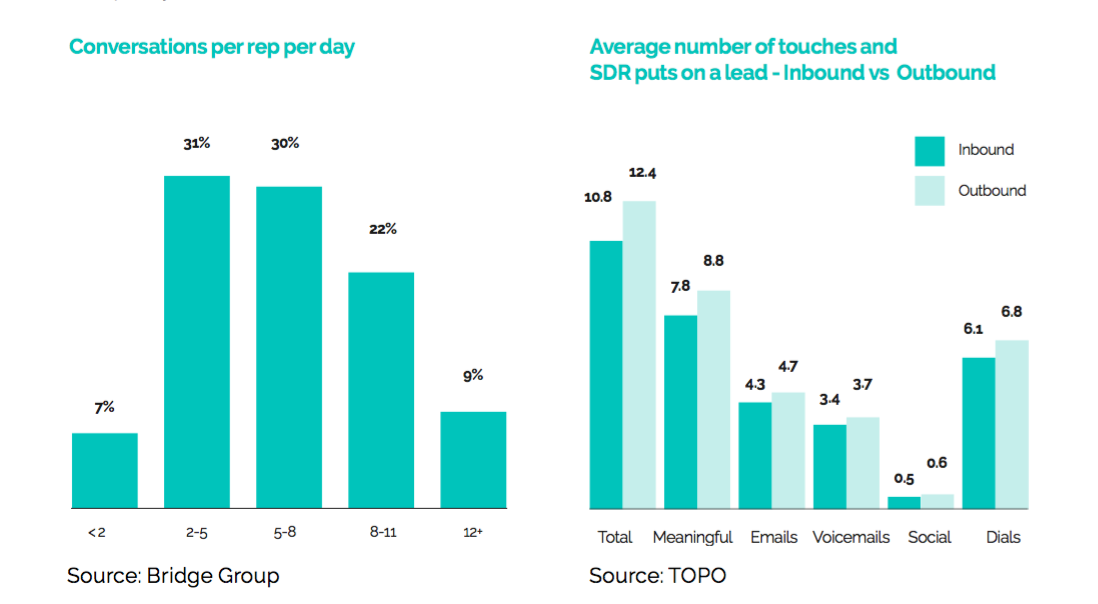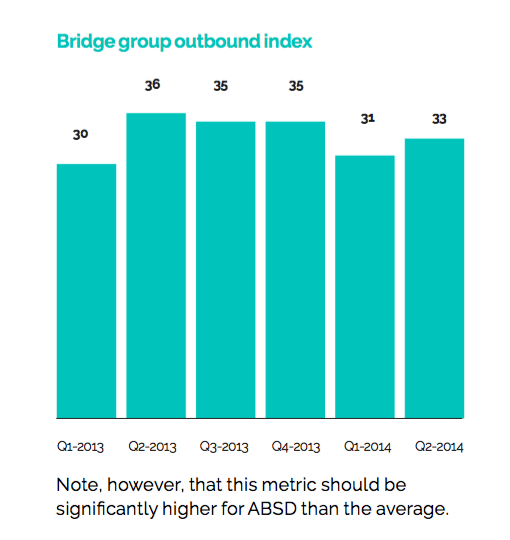If you’ve been a reader of LevelEleven’s blog for a while now, I don’t need to convince you of the importance of measuring your sales metrics. However, in this new account based sales development (ABSD) movement, the metrics have slightly shifted. If you continue to track the traditional lead-based metrics when you’re executing ABSD, you can easily find yourself in trouble.
 If you want to track and measure the right things, you still need a systematic approach, but you also need to start with the learning the new metrics of ABSD. Here’s what different:
If you want to track and measure the right things, you still need a systematic approach, but you also need to start with the learning the new metrics of ABSD. Here’s what different:
- You must measure success at the account level rather than the lead level.
- You must focus on quality over quantity.
- You must drive collaboration, because ABSD is a team sport.
There are three main categories of metrics in sales: activity-based, outcome-based and conversion metrics. Conversion metrics are more relevant to the inbound model, so the two that we’re going to focus on here are:
- Activity-based metrics: number of calls, emails, contacts over a period of time, coverage of accounts, etc
- Outcome-based metrics: pipeline and revenue numbers generated by SDRs.
“The value of a sales development effort is measured by increased won business per account executive and/or accelerated new customer acquisition.”
–Trish Bertuzzi, “The Sales Development Playbook”
Activity-based sales metrics
Activity-based metrics answer the question, “Are my reps doing enough of the right things?”
These are leading indicators of success, meaning if these numbers are in good shape, that’s a positive signal of success down the funnel. How you define the “right” things will reflect your own SDR playbook. The things you train and coach, like:
- Task completion metrics show whether reps are keeping up to date on tasks or falling behind.
- Dials, emails or contacts per day metrics measure communication efforts against the target you set based on daily schedules, but remember: Highly personalized emails and conversations do take longer than templated ones (and they’re worth it).
- Account coverage metrics track activities around building contacts or mapping accounts
- Dial-to-conversation metrics are similar to dial-to-connects but are more concerned with quality than quantity.
- Meaningful conversation metrics are what Trish Bertuzzi says to measure if you’re only going to track one metric.
- Conversation-to-appointment metrics reveal the quality of conversations.
According to TOPO, it takes 12.73 dials to get a connect when calling direct phone numbers and 18.83 when calling switchboard numbers. The industry average conversion rate is 22.5 dials to one meaningful conversation. If you’re calling highly solicited divisions, such as IT or marketing or very senior executives, the ratio is closer to 30-to-1.
On average, it takes three meaningful conversations to get one appointment.
 “In the old days, we might have simply tracked, say, 300 dials a day. Today, it might be a fair amount of dials but also 10-12 emails, or 20 conversations a day.”
“In the old days, we might have simply tracked, say, 300 dials a day. Today, it might be a fair amount of dials but also 10-12 emails, or 20 conversations a day.”
–Chad Burmeister, Sr. Director, Sales Development, RingCentral
Outcome-based sales metrics
Activities are important, but only if they generate the outcomes you need. These can also be called results metrics. These are the bottom line, and ultimately what really matters to your organization. Outcome-based metrics include:
- Pipeline created metrics show the number and value of meetings and/or opportunities created for AEs.
- Revenue generated metrics are paramount measurements, like the value of closed deals initiated by SDRs.
- ‘Accounts accepted’ rate metrics are often measured per thousand accounts prospected, as in this benchmark from The Bridge Group:.
 Account based sales development is just the beginning – a smaller piece of the Account Based Everything (ABE) movement. I believe the adoption of ABE will once again transform how companies grow, unifying sales, marketing and support teams around one common understanding of target accounts.
Account based sales development is just the beginning – a smaller piece of the Account Based Everything (ABE) movement. I believe the adoption of ABE will once again transform how companies grow, unifying sales, marketing and support teams around one common understanding of target accounts.
Just as the marketing automation and demand generation revolution required new metrics, account-based strategies will require new metrics, too. When it comes to ABE, it’s important for us to apply this same type of quantitative thinking to both optimize our efforts and prove the value of our investment.
But again, it starts with ABSD. That’s why we’ve written the Clear and Complete Guide to Account Based Sales Development. If you want to learn how to align your team, orchestrate and launch personalized campaigns at scale, then measure and adjust. You can download the entire eBook right now for free.



